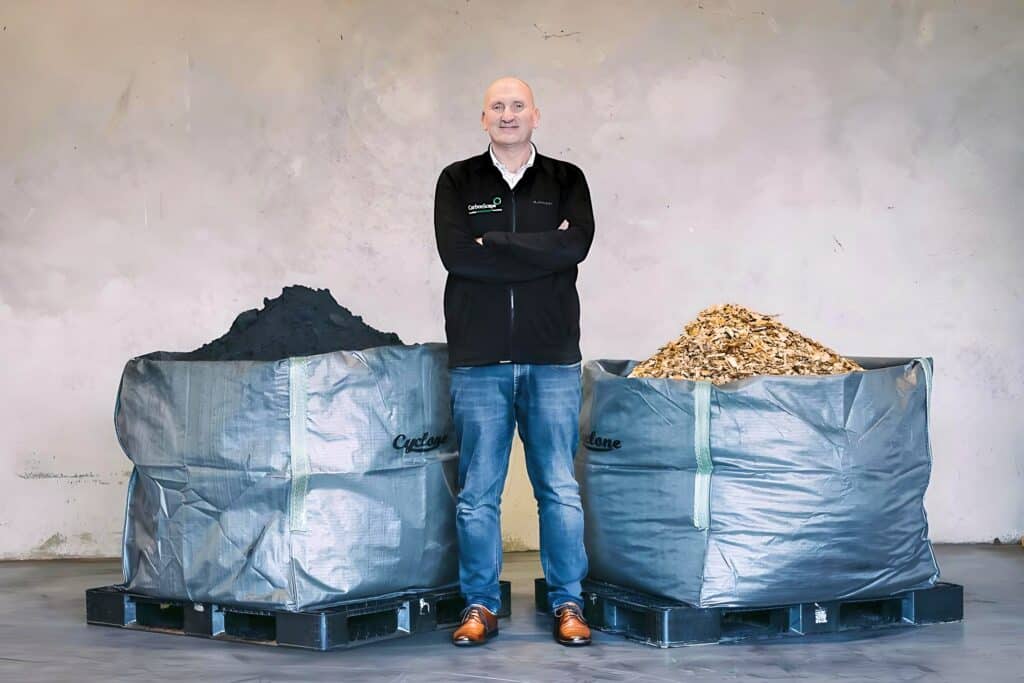Researchers have found a way to turn a wood-based waste product into a transparent coating or colourful reflective surface and claim that it can be used in glass and windows.
The discovery was made by researchers at the Aalto University in Finland, who developed a method of turning Lignin into a bio-based transparent coating with anti-fogging and antireflective properties.
According to the study’s lead author, doctoral candidate Alexander Henn, “High-value applications are important to move away from using lignin only as a fuel.”
The latest research supports a 2021 study by Mr Henn, which claimed that Lignin can be used to create stronger and more resilient construction materials.
Lignin, which makes up 20 to 30% of the wood composite, has traditionally been discarded as waste by the pulp and paper industries. Even when used, 98% end up in low-value products like combustion heating or power generation.

However, times are changing, with Wood Central reporting earlier this month that Finnish companies are now using the material to develop highly processed, high-value products made into fine carbon powder for lithium-ion batteries.
According to Satu Härkönen, Stora Enso is looking to use Lignin applications in various applications.
“We have developed, for example, lignin-based glue, with the entire product being bio-based. In addition, we have tested using Lignin as a substitute for bitumen, for example, in making asphalt,” Mr Härkönen, Stora Enso’s Head of Communication, said.
Last week, Wood Central revealed that CarbonScape has secured a US $18 million investment from the Finnish forest giant, battery producer Amperex Technology Ltd (ATL), and other parties to commercialise the production of the batteries.

However, according to Mr Henn “One of the barriers to using Lignin is its complicated molecular structure, which makes it difficult to break down.”
Lignin nanoparticles (LNPs) are hydrophilic and are suited for creating textures, making them perfect for optical applications, especially those requiring anti-fogging properties.
“However, a problem in achieving this use has been overcoming the particles’ opacity, which requires precise control over film thickness,” Mr Henn said.
In the study, the researchers looked at decreasing the size of LNPs to overcome the opacity issue since smaller particles are less cloudy and scatter light more uniformly.
“Optical coatings need to be transparent, but so far, even rather thin lignin particle films have been visible,” according to Mr Henn.
“We knew that small particles appear less turbid, so we wanted to see if we could make invisible particle films by pushing the particle size to a minimum.”
The researchers chemically modified the Lignin via acetylation, an esterification reaction that introduces an acetyl functional group into an organic chemical compound to reduce particle size.
Using acetic acid to drive the reaction – which took only 10 minutes at a relatively low temperature of 140 °F (60 °C) – yielded ultra-small LNPs at high concentrations with unexpected properties.
“The lignin particles made from the acetylated lignin had rather surprising properties, which made the rest of this study very interesting,” Mr Henn said.
“The possibility to make photonic films, for example, came as a total surprise.”

The small size of the particles enabled the researchers to control layer thickness and appearance, from transparent sub-monolayers to multi-layered films, which allowed them to control the colour and absorbance of light at different wavelengths.
The quick and straightforward acetylation method creates Lignin that can used differently.
The researchers found that the ultrathin transparent coatings reduced light scattering caused by water droplets and concluded that acetylated lignins were suitable as an anti-fogging coating for transparent surfaces.
“And, by applying thicker layers and using multilayer films, we were able to control the colour of the coating, achieving bright hues of yellow, blue, and purple,” Mr Henn said.
“These thicker layers were also photonic; they reflected light.”
The researchers say the speed and ease of the acetylation reaction and its high yield mean that it could be scaled up to industrial levels, with the added benefit of Lignin as a carbon sink.
“Lignin-based products could be commercially valuable and simultaneously act as carbon sinks, helping relieve the current fossil fuel dependence and reduce carbon dioxide emissions,” said Monika Österberg, one of the study’s corresponding authors.
The research supports a new report published by the UN Environment Programme and the Yale Centre for Ecosystems and Architecture, calling for a circular” approach to building materials.

With a focus on ‘Avoid, Shift and Improve,’ the report calls on policymakers, manufacturers, architects, developers, engineers, builders and recyclers to address the billowing emissions from construction activity.
It reports that substituting carbon-intensive building materials, like steel and concrete, for bio-based materials like timber, bamboo, and biomass will save emissions by up to 40% by 2050.
“However, more policy and financial support is needed to ensure the widespread adoption of renewable bio-based building materials.”
Building less and repurposing existing structures, which it has termed ‘the circular approach,’ will generate 50-75% fewer emissions than new construction.
This approach, which includes retrofitting, “is the most valuable option,” as it “promotes construction with fewer materials and materials with a lower carbon footprint and facilitating reuse or recycle.”






